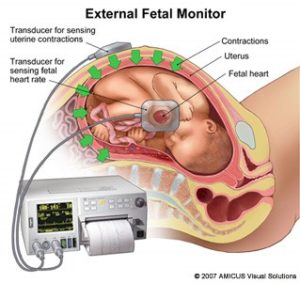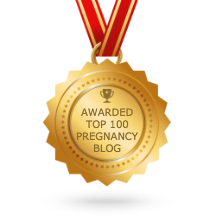You’ve probably got a busy schedule, and now your doctor prescribed a non-stress test. Just add that to your list of things to do before the baby comes.
What’s the Purpose of a Non-Stress Test?
The main purpose of a non-stress test during pregnancy is to check on the health of your baby and your amniotic fluid level. There can be a wide variety of factors that cause your doctor to prescribe your non-stress test. You may be past your estimated due date, or of advanced maternal age, have gestational diabetes, or any other infinite variations that can happen in any pregnancy.
The FDA “recommends that patients talk to their health care provider to understand the reason for the examination, the medical information that will be obtained, the potential risks, and how the results will be used to manage the medical condition or pregnancy.”

Informed Consent Questions
Do you really need this non-stress test? In many cases, it can be a seemingly benign way of checking on the health of your baby. Even though it is non-invasive, it can possibly lead to some much more invasive interventions, including induction of labor.
If you do all six things on this list to prepare your body, you may be able to avoid those interventions and continue with a healthy pregnancy. In most pregnancies, the medical evidence supports letting labor begin on its own. If you’ve done all the steps, below, and your doctor finds indications for an induction, make sure you ask all your informed consent questions before you proceed. In most situations, you will have time to discuss it, think about it, and consider the risks versus the benefits, and make an informed decision with your care provider.
READ RELATED POSTS: QUESTIONS TO ASK IF YOUR PROVIDER IS RECOMMENDING INDUCTION OF LABOR
6 Steps to Prepare for Your Non-Stress Test
- Before your test, soak in a warm tub for 30-60 minutes. Your body will absorb the water, hydrate your cells, and help to increase your amniotic fluid levels. Read a book. Watch Netflix. Watch a movie – anything to pass the time. The temperature of the tub can be 97-100 degrees F, or comfortable, and not too hot. Talk to your baby and do your best to relax.
- The night before, and the day of, drink water with electrolytes in it. Your body will utilize that fluid better than plain water and hydrate your cells from the inside. You can easily over-hydrate with standard water throwing off potassium and calcium levels that can affect your baby too.
- Drink at least 8-16oz. of electrolyte water while in the tub.
- The day before keep track of your protein intake, making sure you are eating 80-100grams of protein.
- Eat a meal 1-2 hours before your NST. Eat a good supply of healthy carbohydrates, or a well-balanced combination of carbs and protein.
- Drinking either a caffeine drink or a drink with sugar or a big glass of orange juice can help “wake up” your baby. Your practitioner is looking for baby’s movements, reaction to contractions, heart rate.
NSTs check the baby’s heart rate as he moves around inside mom. Monitor straps are placed around the mom’s belly, one to listen to the baby’s heart rate and another that measures contractions if any are happening. These are the same types of straps placed for the duration of labor when women choose to birth in the hospital. The medical model believes that a non-reactive NST is cause for concern that the baby might not be tolerating pregnancy very well or that the placenta is deteriorating, not offering the baby as much nutrition and/or oxygen as earlier in the pregnancy. Sleep cycles can mimic a non-reactive NST, which is a why it’s a good idea to eat a high carbohydrate meal and caffeine, soda, soda or juice to wake up baby pre-testing.

Bring your BRAIN to your NST and to your birth!
Another part of the pre-NST preparation is in anticipation of a failed NST and the subsequent Amniotic Fluid Index (AFI) often done at the same time, and Biophysical Profile (BPP) that will be recommended.
If something is amiss with the placenta, the baby, or mom, it is more clear because the mother has done her part to be ready, eliminating the variables not often taken into account by those in the medical model. In other words, if the NST is non-reactive, even after the meal, after water loading, after a long soak, after talking to the baby, after relaxing…then next steps may be considered.
You can rest assured you’ve done everything you need to make sure your test is accurate.

READ RELATED POST:
What’s Induction of Labor? Why Induce? Why Not? How it Works.
Resources:
- WebMD
- UofMhealth.org
- https://www.ncbi.nlm.nih.gov/











